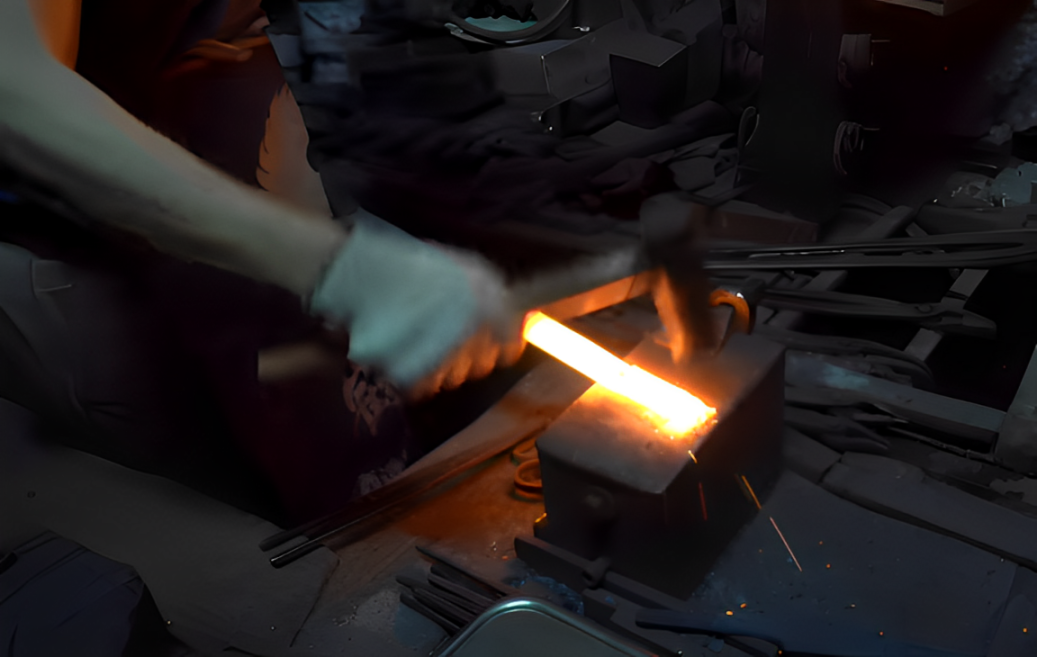
-
Single-Edged or Double-Edged: Which to Choose?
-
May 29, 2023
-
The choice between single-edged and double-edged knives involves understanding their unique benefits and suitability for different culinary tasks.
-

The Single-Edged Mastery
-
Single-edged knives, with their asymmetrical sharpening, offer a suite of advantages tailored to the precision and finesse of Japanese cuisine:
-
- Unmatched Sharpness:
The single-edged design enables superior sharpness, making tasks such as peeling and chopping vegetables effortlessly smooth.
- Unmatched Sharpness:
-
- Precision in Fish Preparation:
These knives excel in fish preparation, gliding close to the bone to ensure minimal waste and maximum flavor.
- Precision in Fish Preparation:
-
- Pristine Cuts:
The clean, precise cuts achievable with single-edged knives are ideal for presenting dishes where aesthetics are paramount.
- Pristine Cuts:
-

Designed with the nuances of Japanese cuisine in mind, single-edged knives are favored by professional chefs and culinary establishments dedicated to authentic Japanese fare.
The Double-Edged Versatility
-
Conversely, double-edged blades, with sharpening on both sides, embody the versatility of Western culinary tools. Popularized in knife designs like the Santoku and Gyuto, they offer a distinct advantage:
-
- Consistent Cutting:
Double-edged knives ensure uniform cutting, providing consistency especially when precision from a top-down perspective is required.
- Consistent Cutting:
-

While single-edged knives demand a certain level of skill and familiarity, double-edged knives are often recommended for their ease of use in everyday cooking, catering to a wide range of culinary tasks.
Making the Choice
-
Whether to opt for the refined precision of single-edged knives or the versatile ease of double-edged blades depends on your culinary needs and preferences. Each type of knife brings its own set of advantages to the table, enhancing the cooking experience in unique ways. As you explore the world of Sakai Uchihamono, consider the demands of your cuisine and the artistry you wish to achieve in your culinary creations.
-

Japanese Knife Structure
We hope that by understanding the structure of knives, our customers will develop a greater appreciation for them and enjoy cooking even more. As their knowledge of knife structure deepens, they will gain a better understanding of how to choose and use their knives, making their daily cooking experience more fulfilling.

The Origin of Craftsmanship
-
The Art of the Japanese Knife
As a craftsman deeply immersed in the world of Japanese knives, I often reflect on the beauty and precision of each blade. There is no such thing as a one-size-fits-all knife. Each type has a specific purpose, carefully tailored to fit the unique demands of Japanese cuisine.
-
Take, for example, the difference between single-edge and double-edge knives. A Japanese knife is traditionally crafted with one side sharpened, creating an asymmetrical edge. This specific design allows for razor-sharp precision, ideal for tasks like slicing fish or vegetables with the utmost care. This one-sided edge allows us to carve with fine control, ensuring that the knife glides smoothly through the material without creating unnecessary resistance.
-
Additionally, the thickness of the blade plays a significant role in the knife’s function. Japanese knives are often thicker and sturdier, built to endure heavy tasks like fish preparation, while Western-style knives are generally more lightweight and versatile for multiple purposes.
-
A significant characteristic of Japanese knives is the "Urasuki" or hollow-ground feature found on many blades. This slight concave shape helps maintain a sharp edge and allows ingredients to slide off the blade more easily. The angled design of the blade also enhances precision and minimizes friction, ensuring that the knife cuts effortlessly, no matter the task.
-
The beauty of these knives lies not just in their function, but in their ability to forge a connection between the cook and the ingredients. Each cut, each slice is a reflection of our craftsmanship, tradition, and deep understanding of culinary artistry.
-
So, when choosing a knife, remember: it’s not just about the blade—it’s about the soul that goes into it. A well-crafted knife elevates your cooking, brings confidence in your hands, and allows you to honor the ingredients you work with. That’s the essence of Japanese craftsmanship, and it's a philosophy that continues to inspire us, generation after generation.

Would you like to experience the sharpness of handcrafted knives from Sakai City, used by 98% of Japanese chefs?
Through our exclusive partnership with Shiroyama Knife Workshop, we bring you top-quality knives. In addition, we offer free Honbazuke sharpening, a protective Saya, and paid after-sales services to ensure long-term confidence.
KIREAJI's Three Promises to You
-

1. Exceptional Japanese Knives
Our knives, crafted by Sakai City's master artisans, combine traditional techniques with carefully selected materials, delivering unrivaled sharpness and durability.
-

2. For a Lifetime of Use
At KIREAJI, we see knives as lifelong companions. Each knife comes with a free saya, and we offer Honbazuke hand-sharpening by Shiroyama Knife Workshop in Sakai City.
-

3. Supporting the Joy of Continued Use
KIREAJI knives are made to grow with you. That’s why we provide trusted after-sales care (fee-based) .







